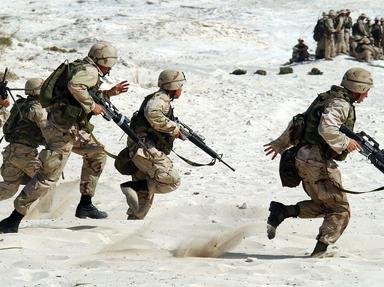Quiz Answer Key and Fun Facts
1. Which of the following was NOT a cause of the Spanish-American War?
2. Two presidents, U.S. Zachary Taylor (future president) and Mexican Antonio López de Santa Ana (former president), fought each other in the Mexican-American War.
3. Which of the following US states was NOT a part of Mexico before the Mexican-American War?
4. In what year did Texas declare its independence from Mexico?
5. Following the war of 1812 Francis Scott Key wrote the Star Spangled Banner after witnessing the bombardment of Baltimore by the British. How many stars were on the flag that he saw?
6. Even though the Japanese attacks on Pearl Harbor sparked American involvement in World War II, President Roosevelt sent American forces to the European theater BEFORE he sent any to the Pacific.
7. Which of the following was NOT listed by the White House as a reason to go to war in Iraq before the 2003 invasion began?
8. The RMS Lusitania, a liner, was sunk by a German U-boat in 1915.
The German government issued a warning in a newspaper advertisement to Americans to avoid the Lusitania.
9. Which of the following, notable because it was the northernmost land action of the Civil War, occurred on 19 October 1864?
10. Benedict Arnold is a name that will forever live in infamy in the United States. But before he was a traitor, Arnold was an American war hero. In the Battle of Valcour Island, Arnold's ships halted the British advance, and forced them to fight a disastrous land battle that crippled the British forces. Where is Valcour Island?
Source: Author
R555F39
This quiz was reviewed by FunTrivia editor
bloomsby before going online.
Any errors found in FunTrivia content are routinely corrected through our feedback system.

